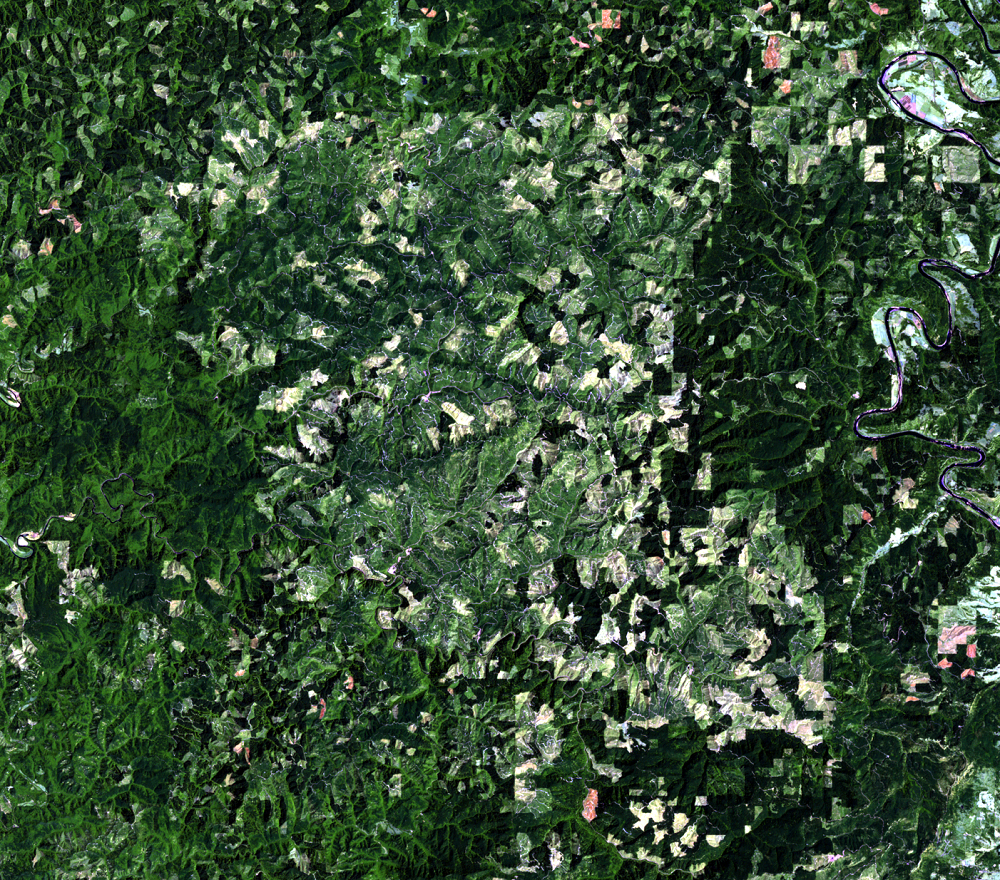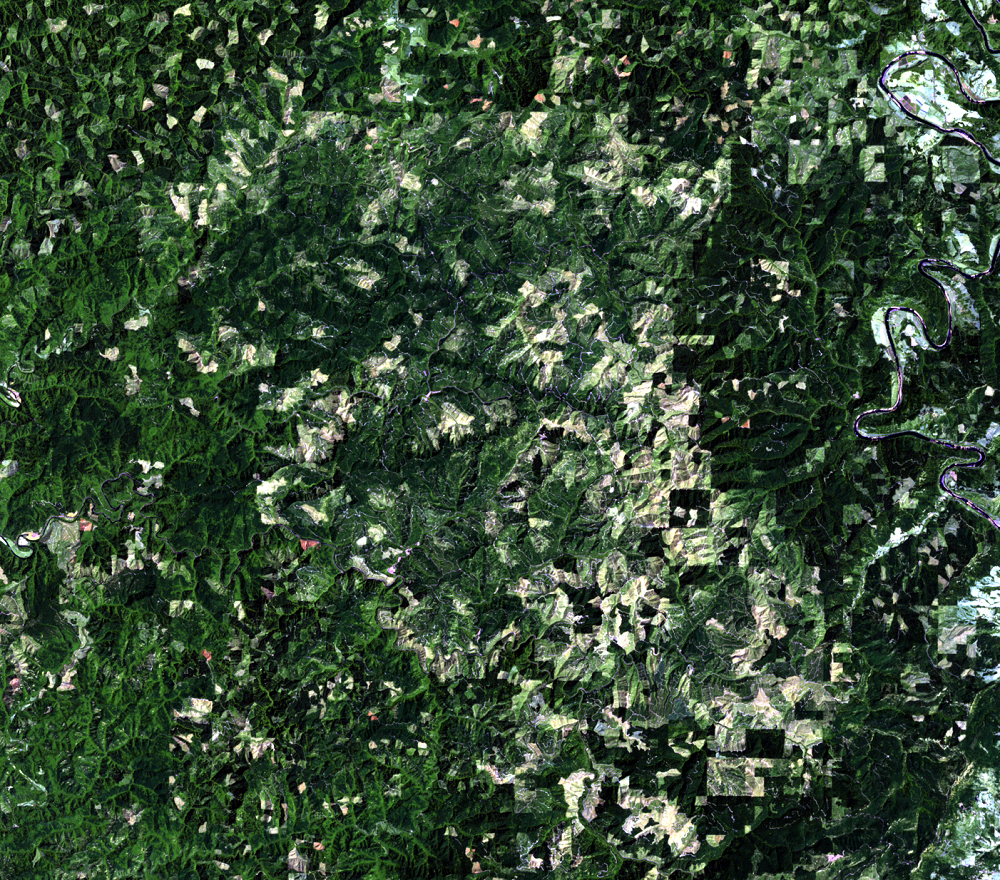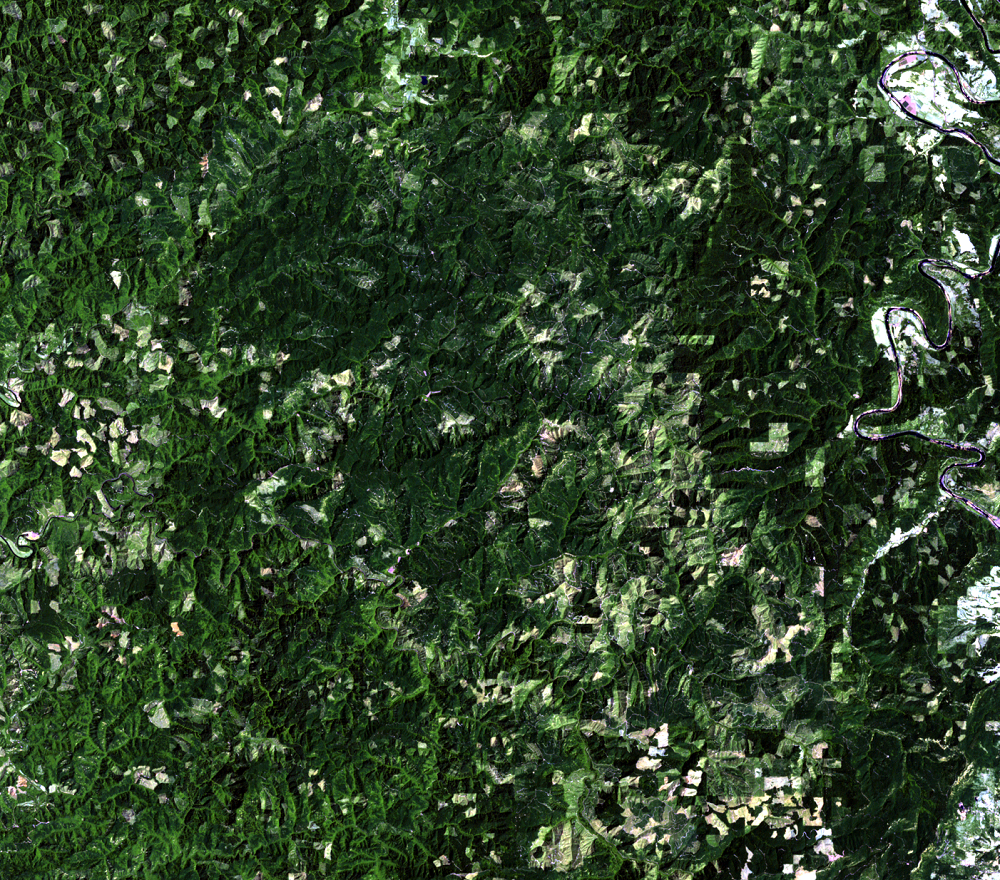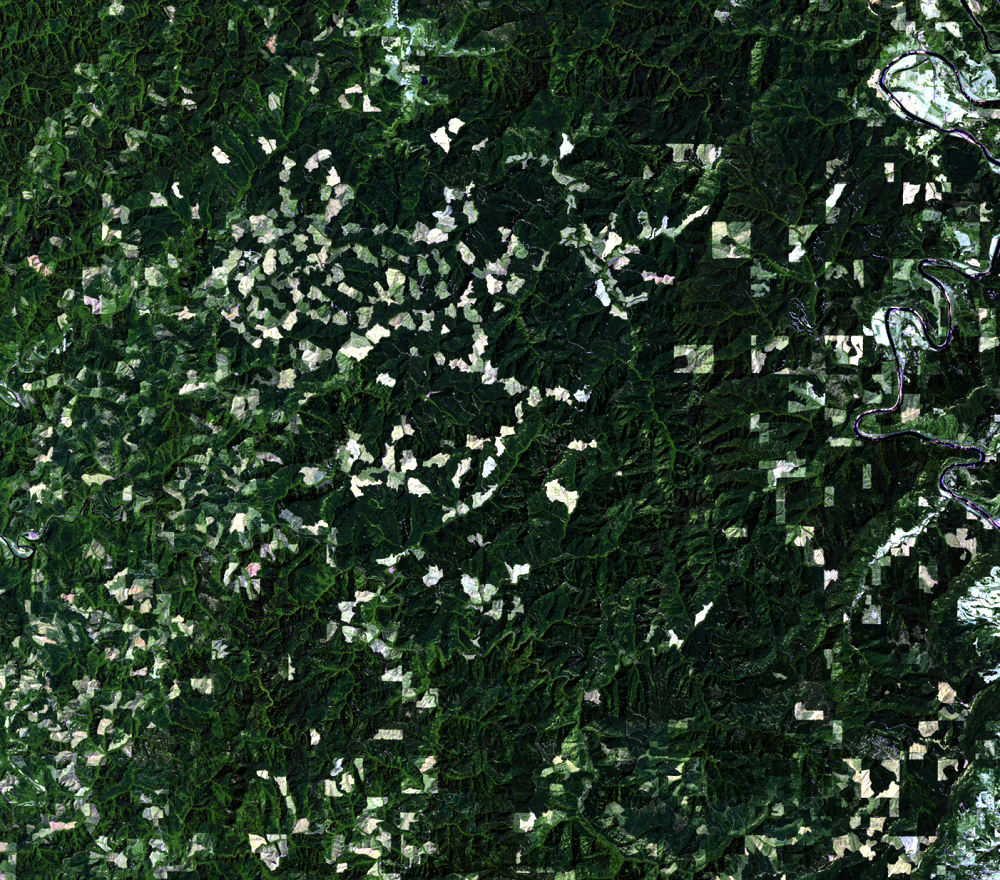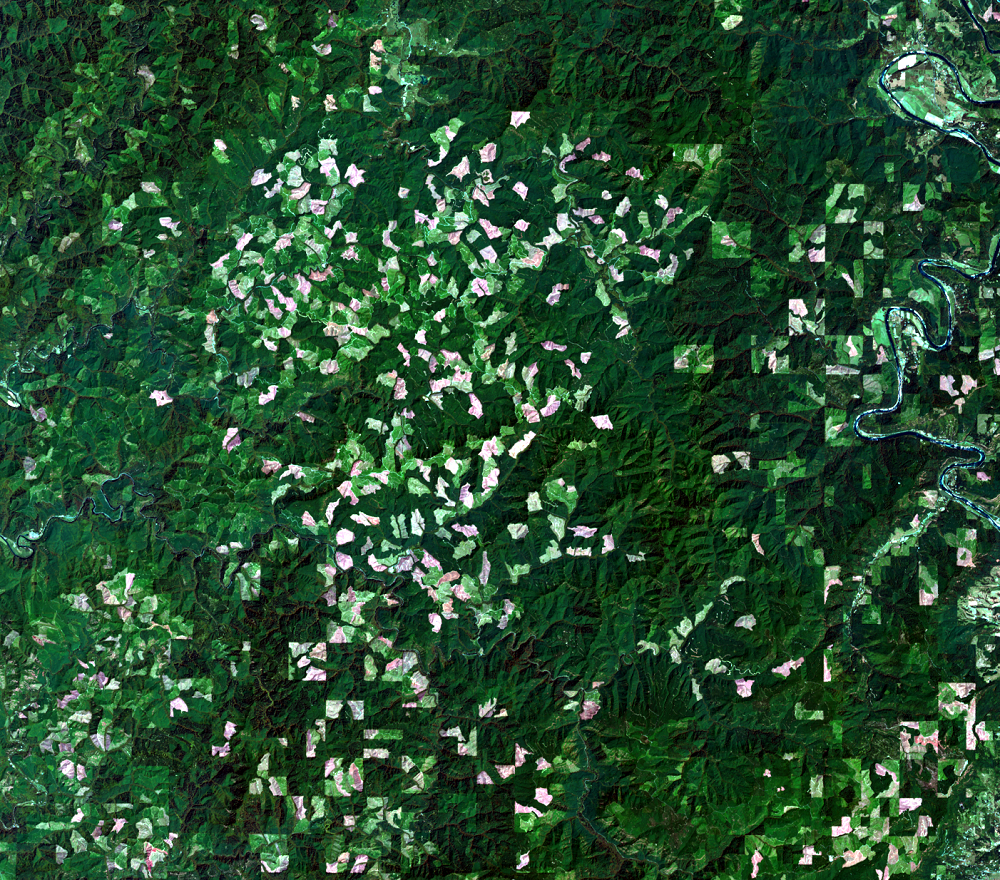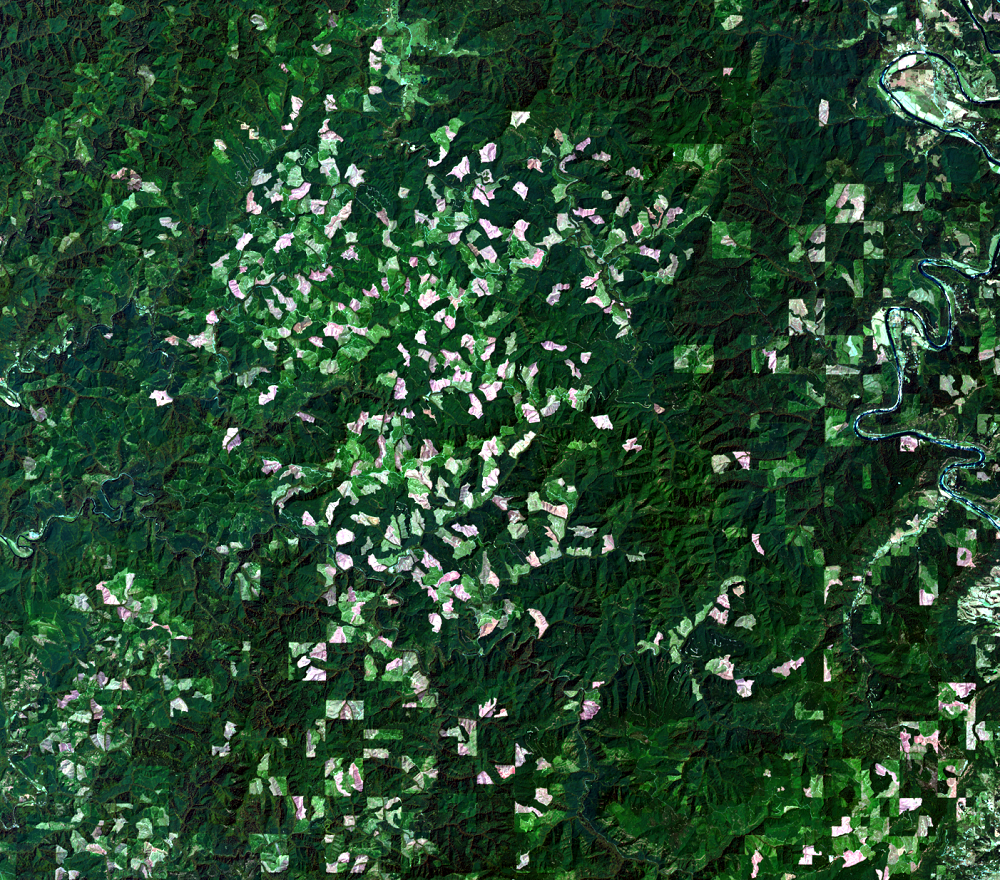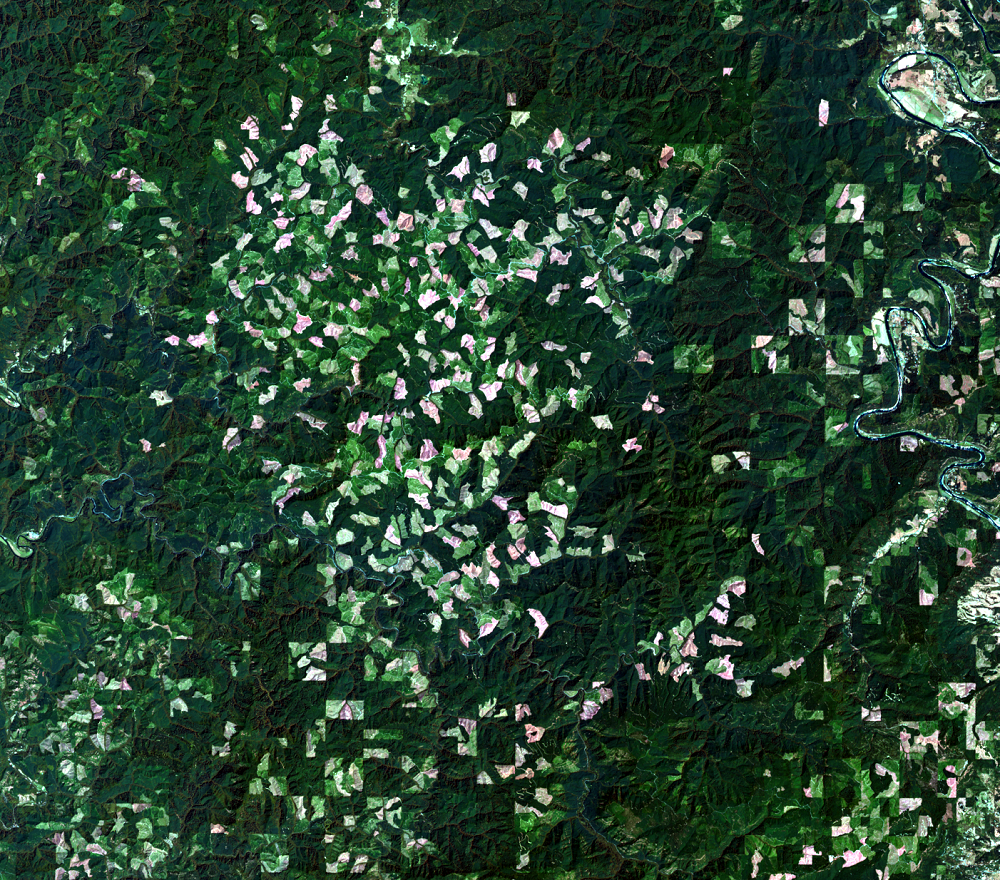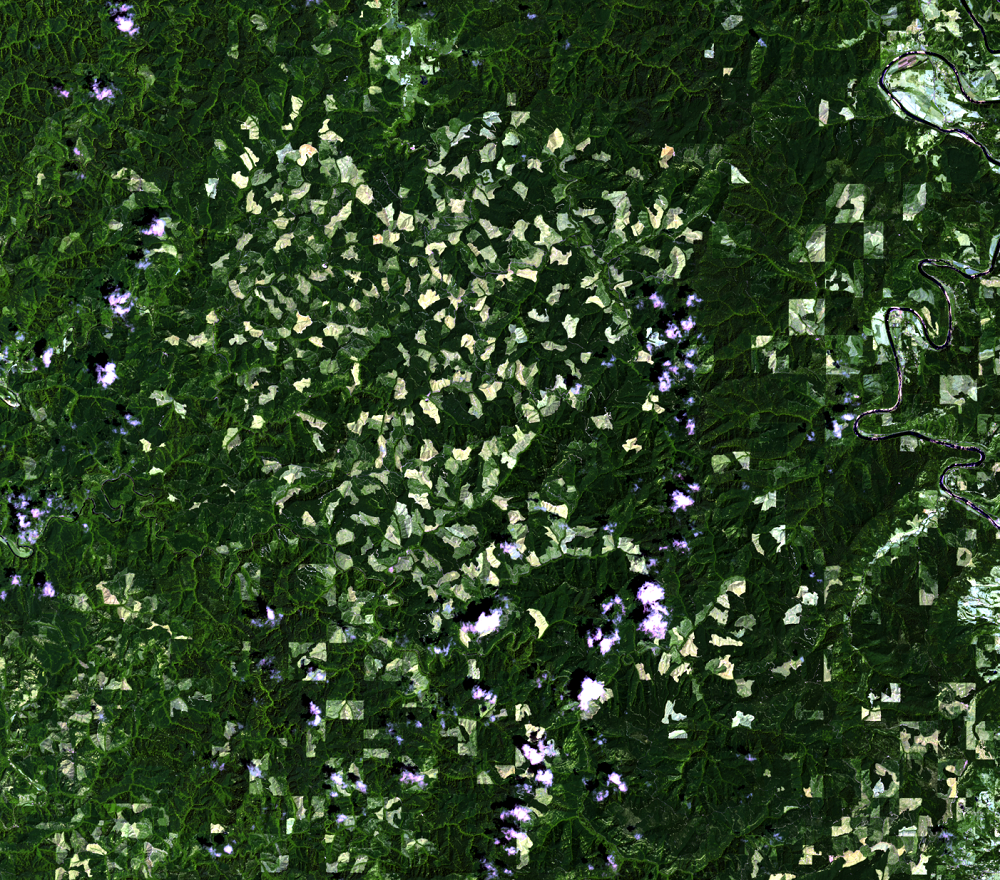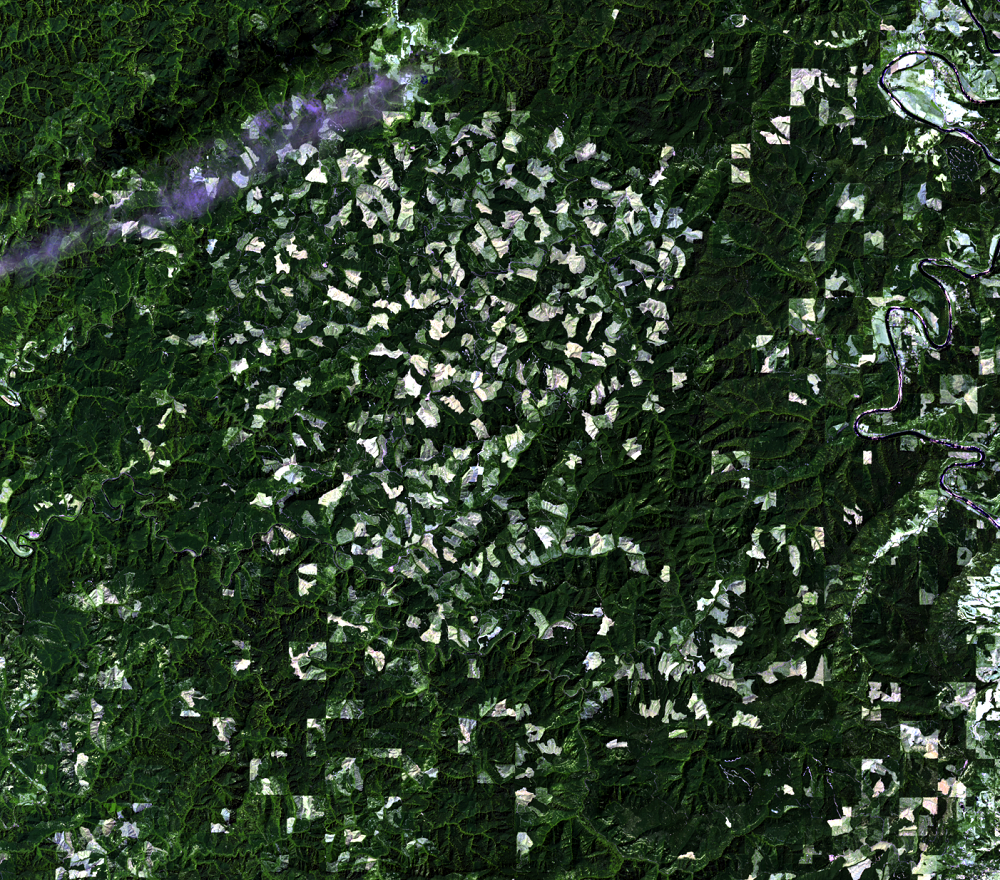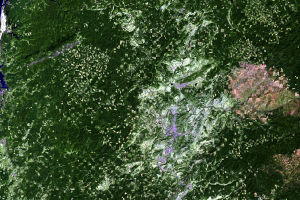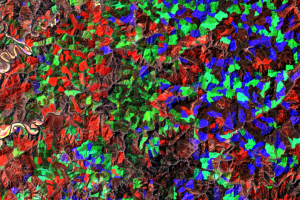
Clearcutting
Earth Resources Observation and Science (EROS) Center - Earthshots
A logging strategy that’s easy to spot in the Landsat imagery is clearcutting. All the trees in an area are harvested, and then replanting begins immediately. Replanting must be completed within 2 years of harvest. In Oregon, about 40 million new trees are planted each year. According to the Oregon Forest Resources Institute, the reforestation success rate is 95% on private land.
Clearcutting is a major change to the forest. Clearcuts look unattractive, and they disrupt wildlife habitat. The clearcut area can also increase streamflow in that area, and the soil can erode more quickly until reforestation occurs. Therefore, in Oregon, the size of clearcuts is limited to 120 acres. They are also limited further when near highways. Forested buffers must be maintained along streams, lakes, and wetlands. This protects against possible increased streamflow erosion and maintains wildlife habitat.
There are actually some positive effects to clearcuts. They create open space in the forest that many plants and animals need to flourish. The full sun promotes rapid regrowth of Douglas fir and other species that need full sun. Also, clearcuts are generally temporary. Oregon requires prompt reforestation.

